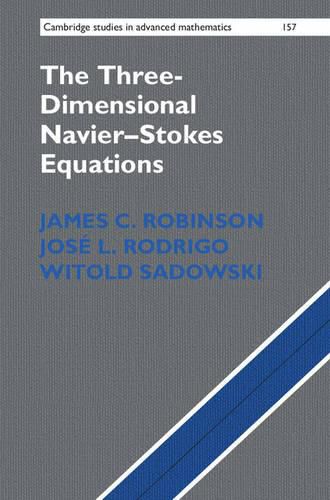Readings Newsletter
Become a Readings Member to make your shopping experience even easier.
Sign in or sign up for free!
You’re not far away from qualifying for FREE standard shipping within Australia
You’ve qualified for FREE standard shipping within Australia
The cart is loading…






A rigorous but accessible introduction to the mathematical theory of the three-dimensional Navier-Stokes equations, this book provides self-contained proofs of some of the most significant results in the area, many of which can only be found in research papers. Highlights include the existence of global-in-time Leray-Hopf weak solutions and the local existence of strong solutions; the conditional local regularity results of Serrin and others; and the partial regularity results of Caffarelli, Kohn, and Nirenberg. Appendices provide background material and proofs of some ‘standard results’ that are hard to find in the literature. A substantial number of exercises are included, with full solutions given at the end of the book. As the only introductory text on the topic to treat all of the mainstream results in detail, this book is an ideal text for a graduate course of one or two semesters. It is also a useful resource for anyone working in mathematical fluid dynamics.
$9.00 standard shipping within Australia
FREE standard shipping within Australia for orders over $100.00
Express & International shipping calculated at checkout
Stock availability can be subject to change without notice. We recommend calling the shop or contacting our online team to check availability of low stock items. Please see our Shopping Online page for more details.
A rigorous but accessible introduction to the mathematical theory of the three-dimensional Navier-Stokes equations, this book provides self-contained proofs of some of the most significant results in the area, many of which can only be found in research papers. Highlights include the existence of global-in-time Leray-Hopf weak solutions and the local existence of strong solutions; the conditional local regularity results of Serrin and others; and the partial regularity results of Caffarelli, Kohn, and Nirenberg. Appendices provide background material and proofs of some ‘standard results’ that are hard to find in the literature. A substantial number of exercises are included, with full solutions given at the end of the book. As the only introductory text on the topic to treat all of the mainstream results in detail, this book is an ideal text for a graduate course of one or two semesters. It is also a useful resource for anyone working in mathematical fluid dynamics.